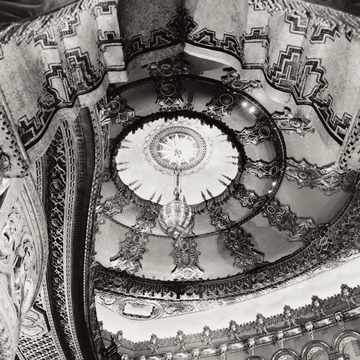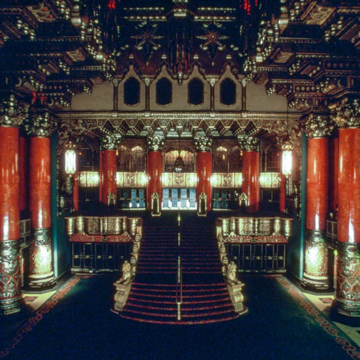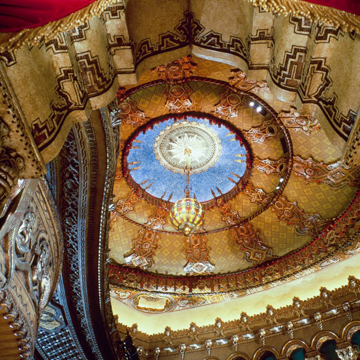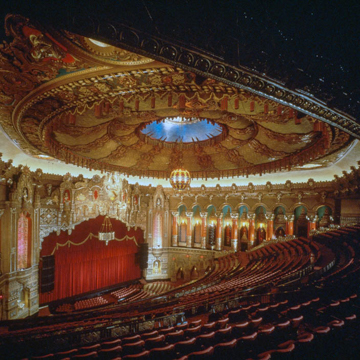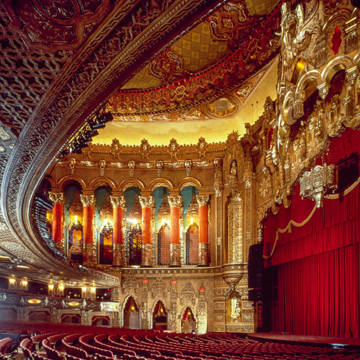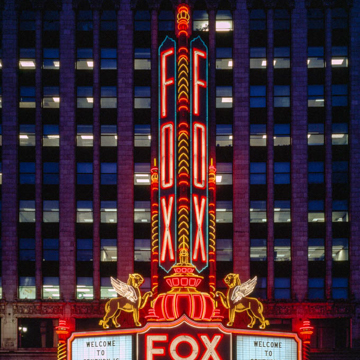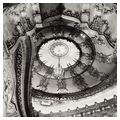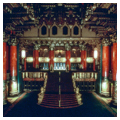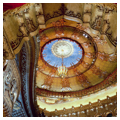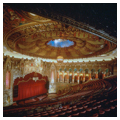Designed for William Fox (1879–1952) and the Fox Theatre chain by local architect Crane (1885–1952), the Detroit Fox is the largest and most exotic eclectic Hindu-Siamese-Byzantine theater of the golden age of the movie palace (1925–1930). The Fox stands, along with its 1929 twin, the Fox Theatre in St. Louis, Missouri, as one of the relatively few remaining movie palaces in the country. It epitomizes the opulence and grandeur that characterized the era.
The theater is within the core of a ten-story office complex and is constructed of a steel frame and reinforced concrete faced with terra-cotta. On entering the five-story grand lobby of the theater, the visitor's attention is instantly captured by the colossal, unfluted, vermillion Corinthian columns and by the recumbent lions adorning the grand staircase. The oval-shaped auditorium is surrounded by cusped, Islamic-inspired arches, surmounted by a colonnade of colossal Corinthian columns extending into the balcony. Decorative gilded plaster elephants, griffins, dragons, pagodas, deities, serpents, eagles, and Hindu goddesses cover the base of the columns and virtually every inch of wall space. A two-thousand-pound chandelier with twelve hundred pieces of glass hangs from a large dome, outfitted like a tent in the center of the auditorium ceiling. In addition to numerous foyers and lobbies, stage facilities, and an auditorium, balcony, and mezzanine that seat over 5,000, the Detroit Fox has eight dressing rooms, a broadcasting booth, a screening room, an infirmary, and a music library.
Acquired by Mike and Marian Ilitch and Little Caesar Pizza, the Fox was restored to its original exotic splendor. The Fox Theatre is a National Historic Landmark.









